Switch House, Mosman – Construction is soon to commence on the switch House by Tony Owen Partners. This House is located near the waterfront in Mosman Bay in Sydney. The steeply sloping site is not accessible to the street. The site enjoys waterfront views to Sydney Harbour. The site contains bushland and a series of rough sandstone walls.
Architizer chatted with Tony Owen, Founder at Tony Owen Partners to learn more about the project.
Architizer: Please summarize the project brief and creative vision behind your project.
Tony Owen: The Switch House is located near the waterfront in Mosman Bay in Sydney. The steeply sloping site is not accessible to the street. The site enjoys waterfront views to Sydney Harbour. The site contains bushland and a series of rough sandstone walls. The client sought an iconic luxury home that matched this iconic site. The challenge was to produce a design that could be constructed with no street access. So the house was designed to be built in 9 modular pre-fabricated parts to be assembled on site like a Rubiks cube.
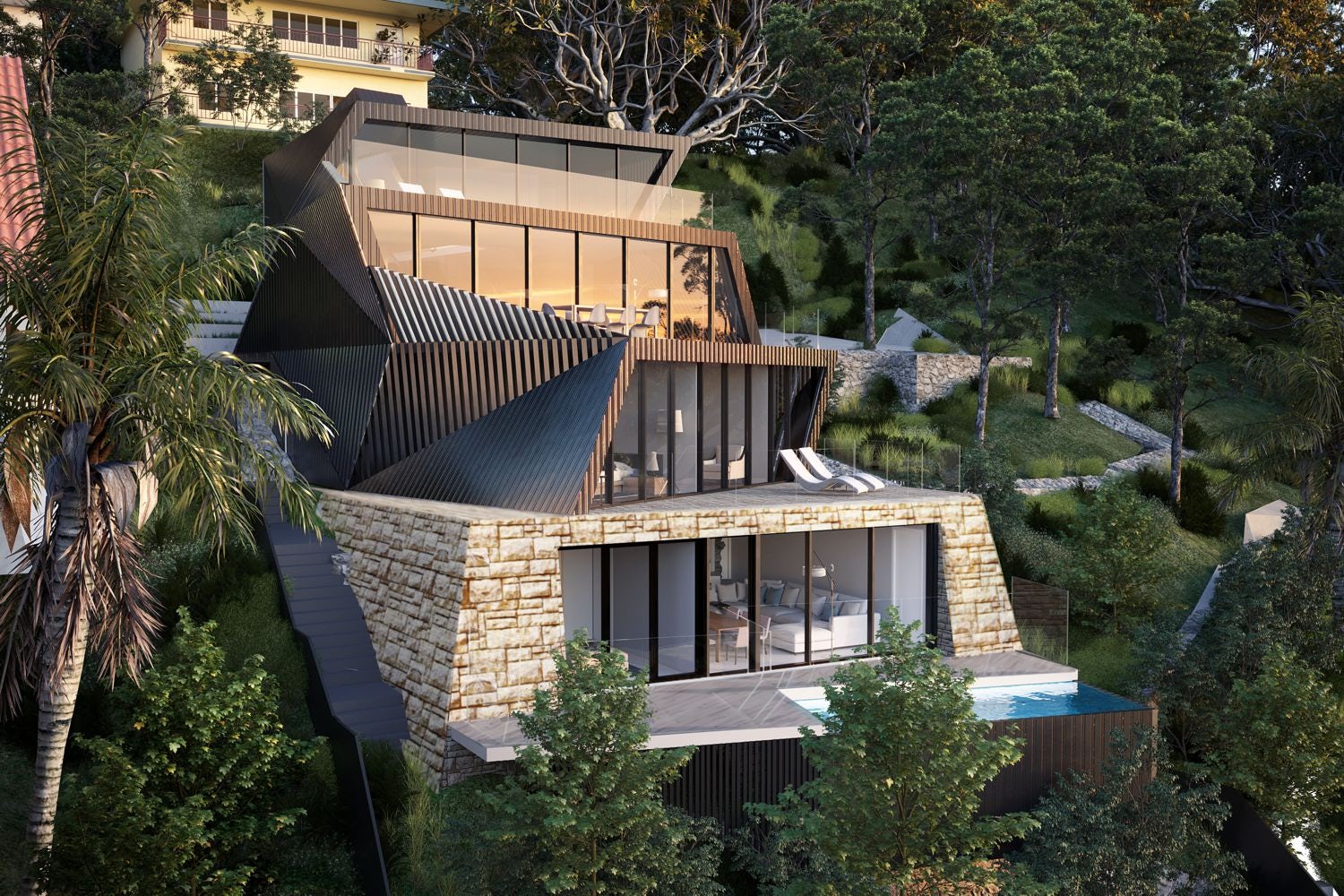
© Tony Owen Partners
What inspired the initial concept for your design?
The design was conceived as a series of stacked steel framed boxes. These boxes are angled at different levels to maximize the view from different heights. These boxes are clad in grey metal cladding to reflect the ‘tree shaded’ context. The boxes have clear glass to the views to the south, and more solid walls to the neighbours to the east, west and north. This is achieved with either solid walls or metal louvres. These louvres are also used as privacy screens to screen the terraces to the neighbours. The result is a pragmatic and functional design, which also creates a sculptural composition of high quality.
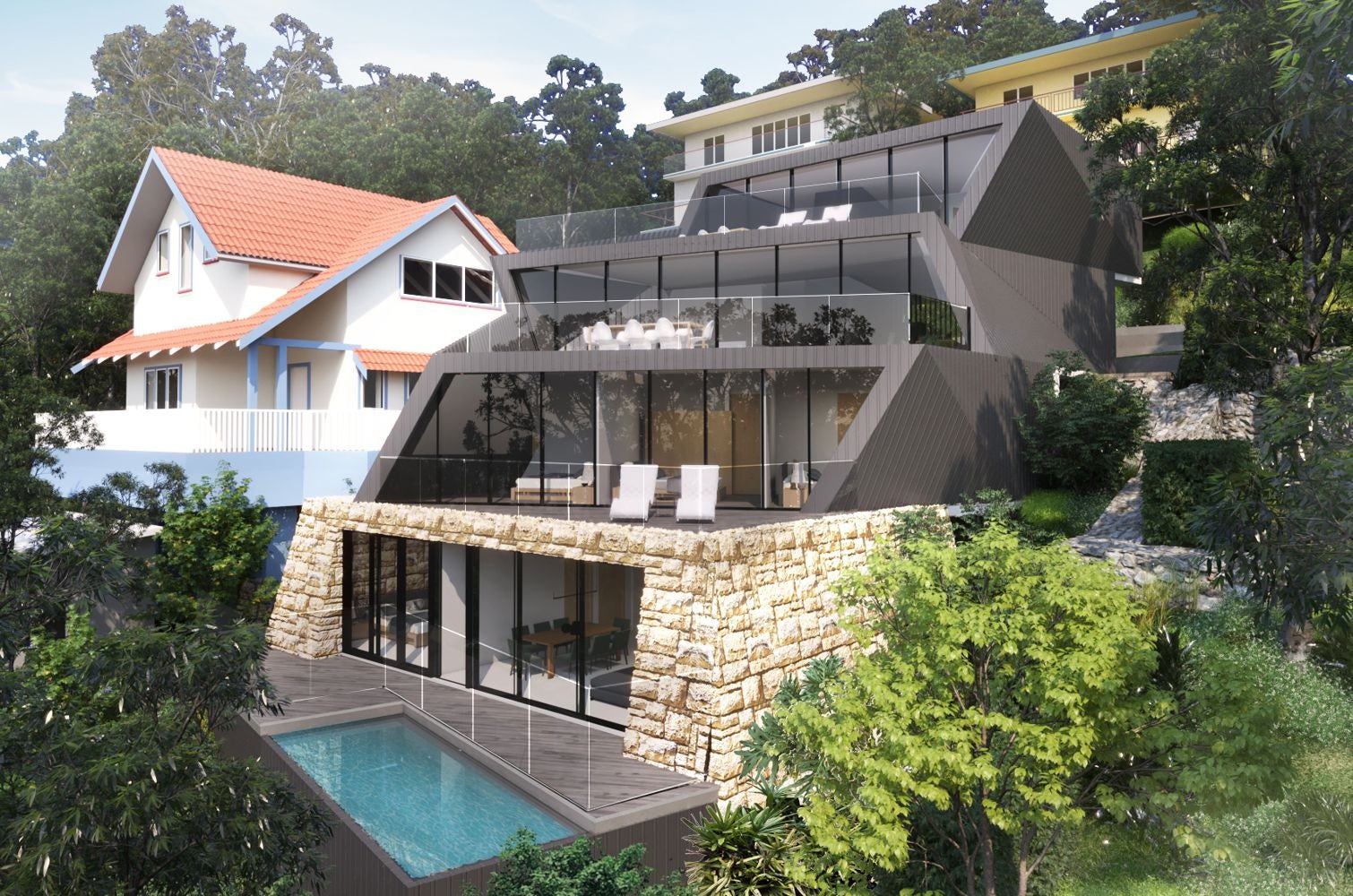
© Tony Owen Partners
What do you believe is the most unique or ‘standout’ component of the project?
The modular steel boxes combine to make a sculpture consisting of 4 levels each twisted relative to each other. This results in a geometric sculpture which is a reflection of the functional requirement for views and privacy. This form is accentuated by the use of a minimalist pallet of dark grey metal cladding and glass. The 3 levels sit atop a 1 story stone podium in the landscape. It is this sculpture that sets the house apart.
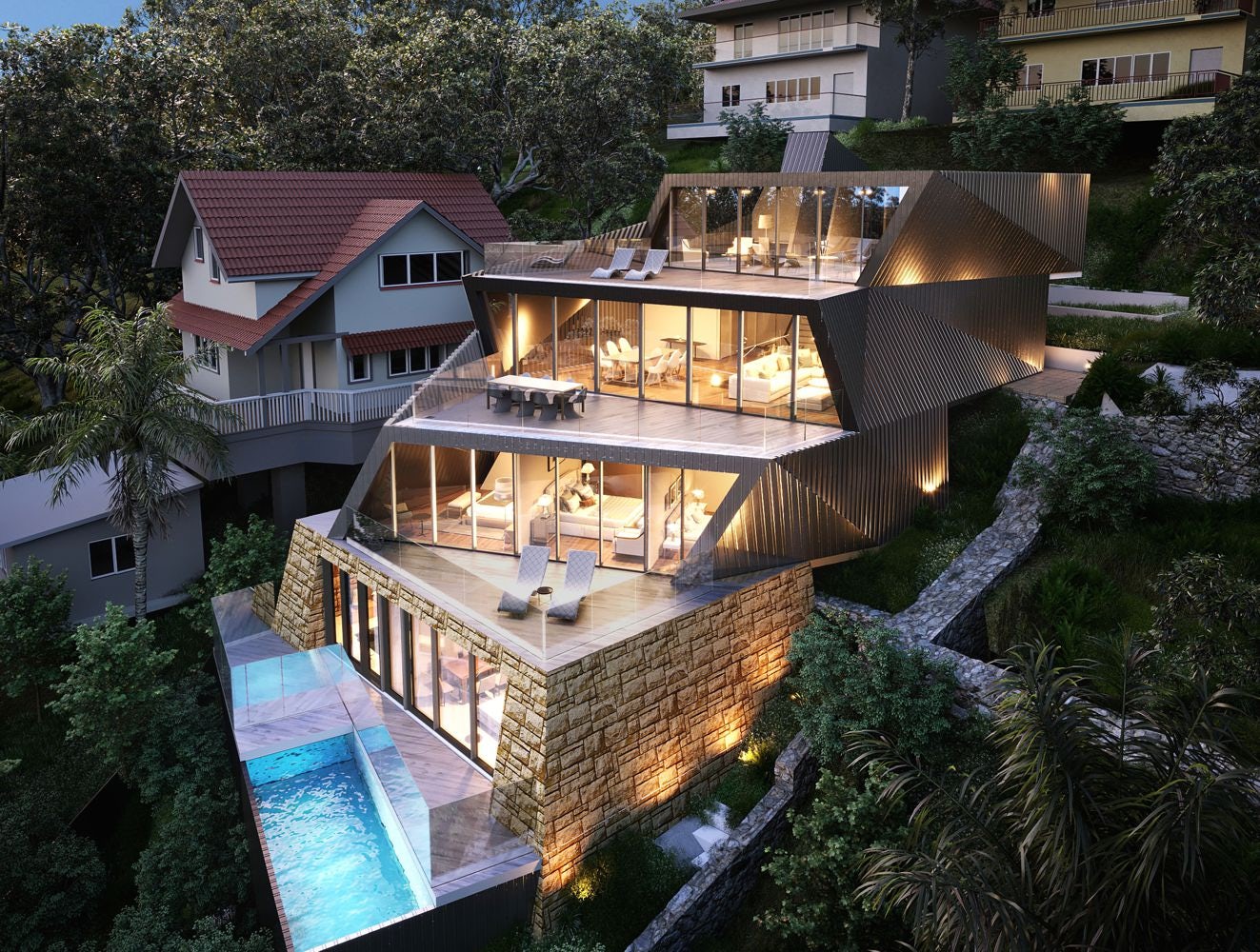
© Tony Owen Partners
What was the greatest design challenge you faced during the project, and how did you navigate it?
The site presented 2 design challenges. The fist is the steeply sloping site and natural bushland. As is common in such terrain in Sydney, we designed a stepped house creating a number of levels and flat outdoor terraces on the site. We designed a steel frame house on columns that touches the ground lightly allowing the bushland to flow underneath. Also The lack of a street address required the house to be constructed as a series of steel pre-fabricated modules. These modules will be delivered to site by helicopter and assembled together.

© Tony Owen Partners
How did the context of your project — environmental, social or cultural — influence your design?
As above, this is an environmentally sensitive house that touches the ground lightly. This results in minimal impact to the existing bush land and retains and harmonizes with the existing sandstone retaining walls on site.

© Tony Owen Partners
What drove the selection of materials used in the project?
We chose a cladding of dark metal. We used a single material to retain the strength of the overall sculptural composition. This material is used as a solid cladding or as a series of metal louvre blades to create privacy or sun shading. The dark material utilized in different textures reflects the quality of dappled light that falls across the site from the tree canopy.
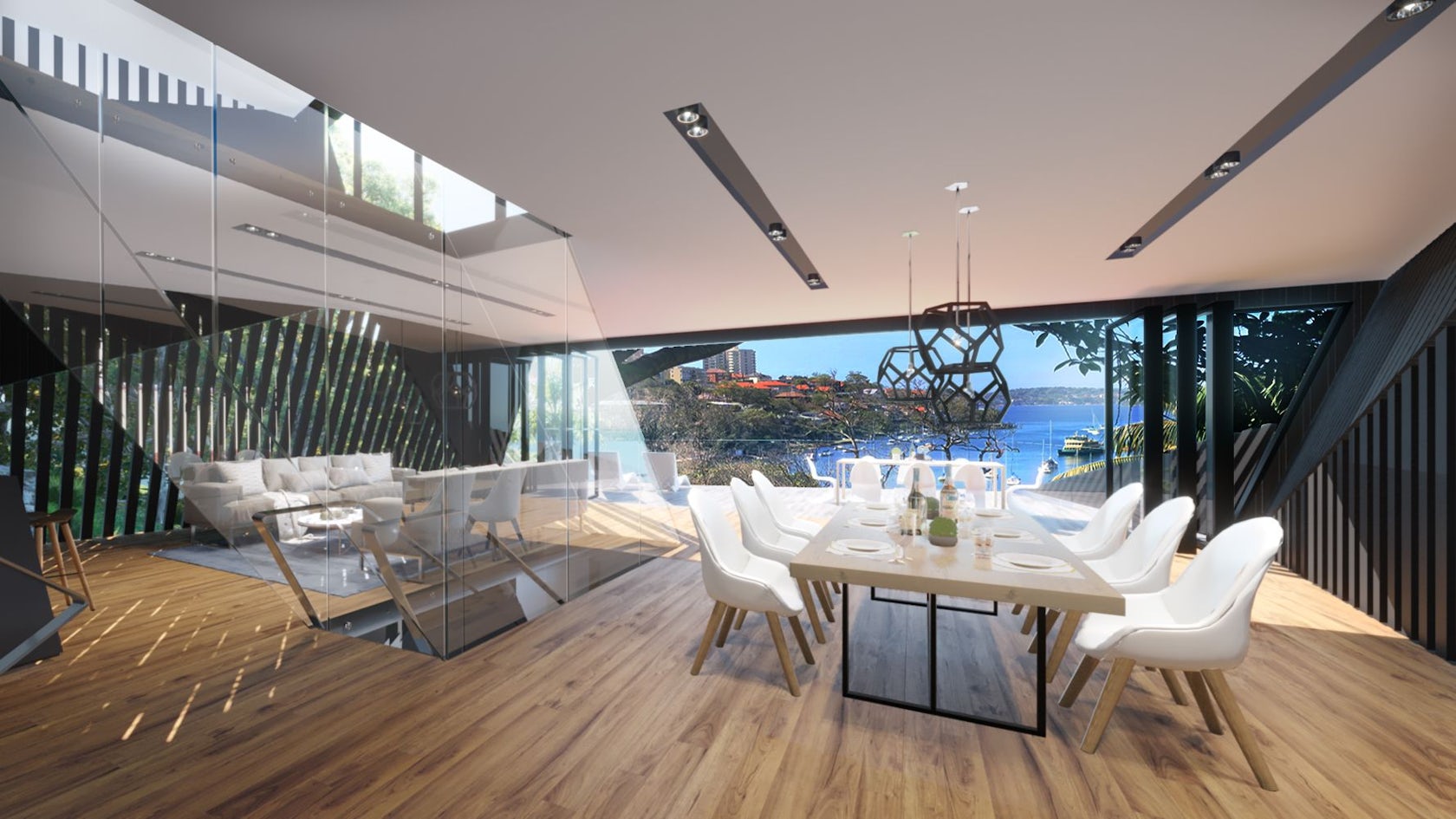
© Tony Owen Partners
How important was sustainability as a design criteria as you worked on this project?
We worked closely with the proposed contractor particularly in developing the construction methodology. The house will be pre-fabricated as 12 steel boxes and assembled on site. Each module has the be conceived as a sand alone entity with its own structural integrity. As such, the means of construction directly influenced the design of the house. We are currently working with civil aviation authorities to finalize the aviation implications of the helicopter delivery process.

© Tony Owen Partners
Were any parts of the project dramatically altered from conception to construction, and if so, why?
Generally one can expect a lot of changes due to the council approval process. But in this case the council staff were great fans of the house and were very supportive. As such there was little change through the approval process.
How have your clients responded to the finished project?
The client is super excited about the design and we are currently working on the construction documentation and construction methodology with the builder; Alliance Living to realize the project.
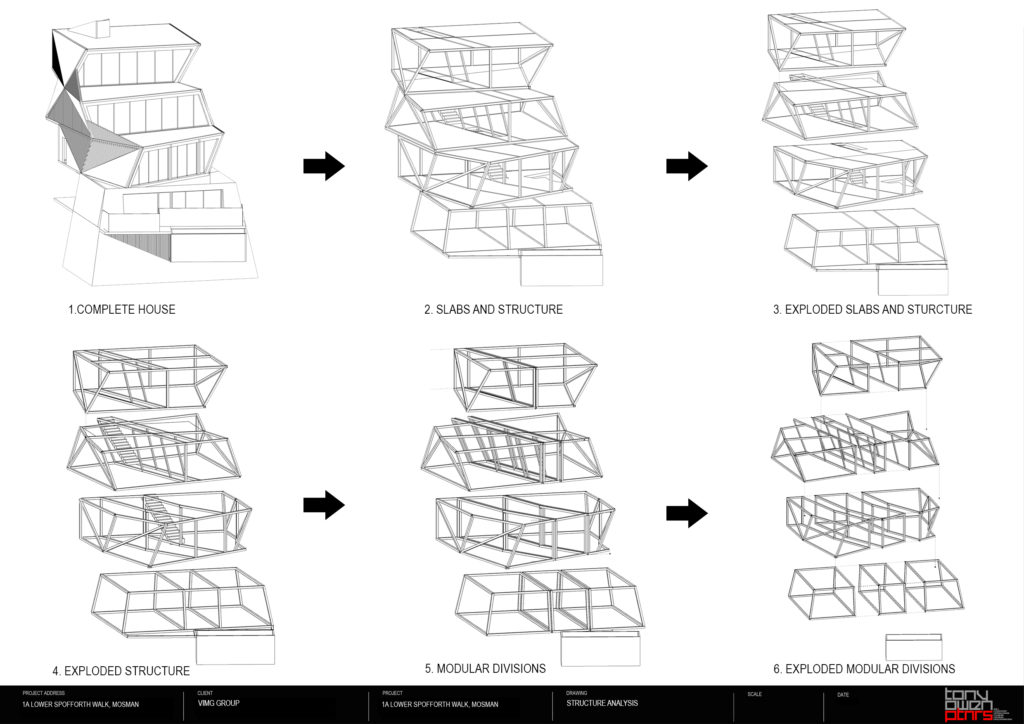
How do you believe this project represents you or your firm as a whole?
This project is indicative of our radically pragmatic approach to design. Our firm is characterized by a methodology rather than a design style. We see each project as an opportunity to explore a condition or problem. Sometimes the objective is not to solve the problem, but to use it as a means of exploring an idea. Each project is an opportunity to explore an idea to achieve an object that creates beauty and an uplifting experience for the user and the environment. In this case the site presented challenges which were opportunities to push the boundaries of construction in ways that would create exciting and beautiful spaces and which could harmonies with the landscape.
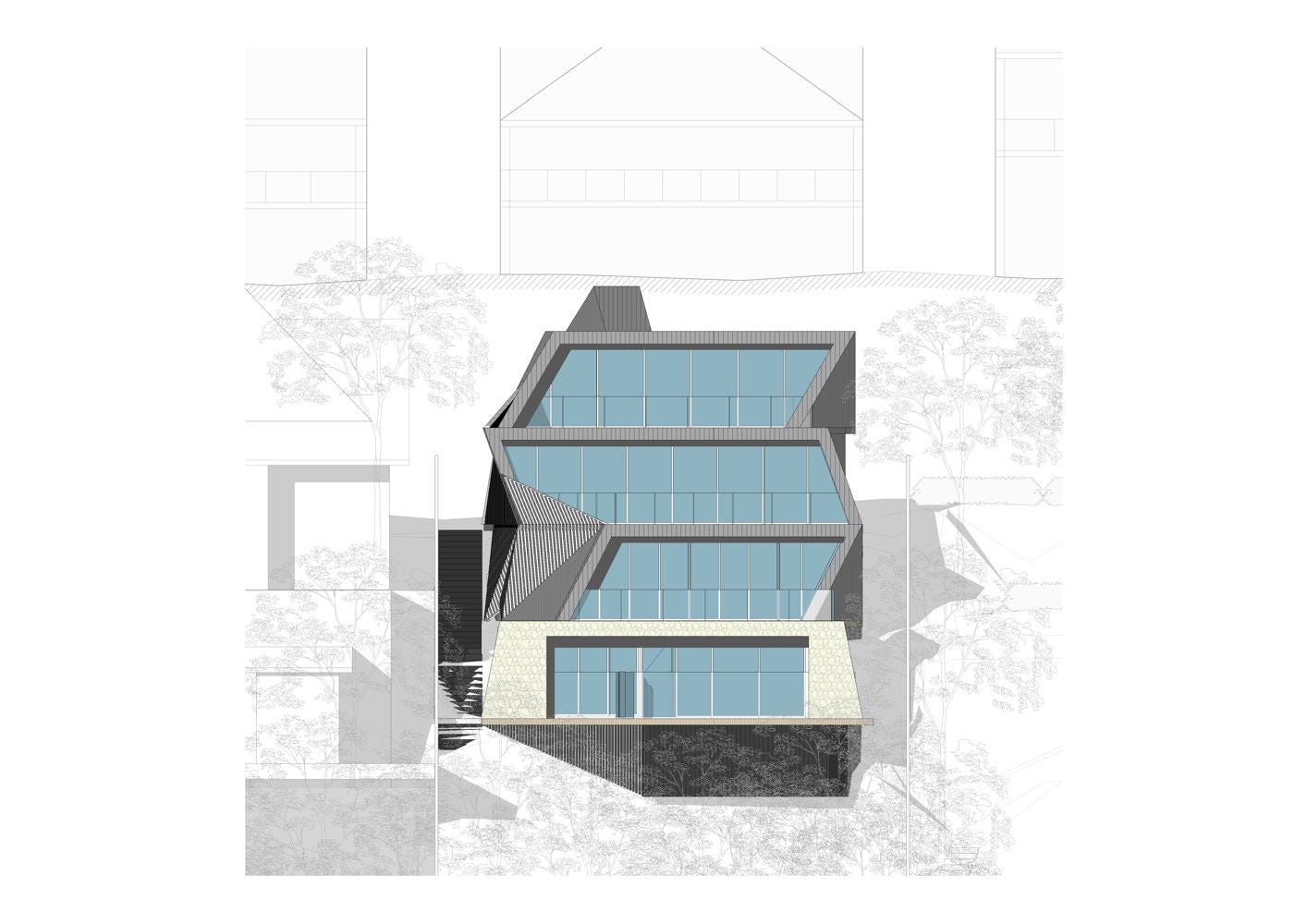
© Tony Owen Partners
How do you imagine this project influencing your work in the future?
Every project is an evolution. Whether we are working on projects that address issues of density in urban areas, or the interface with the natural environment such as this one, the challenge is to learn from past experience and add more to this knowledge. In this case, we built on experience we have developed over many years with pre-fabricated modular building elements such as bathrooms on multi-unit apartment buildings. We are excited about the potential and will further develop this technology to explore rapid prototyping of modular components for large and small projects.
Credits / Team Members
Eric Yang, Joaquim Fortenza
Consultants: Alliance Living Contractors have been integral in exploring and developing the construction methodology and helicopter delivery system for the project.
For more on Switch House, please visit the in-depth project page on Architizer.


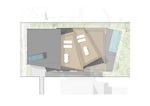

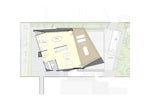





 Switch House, Mosman
Switch House, Mosman 


